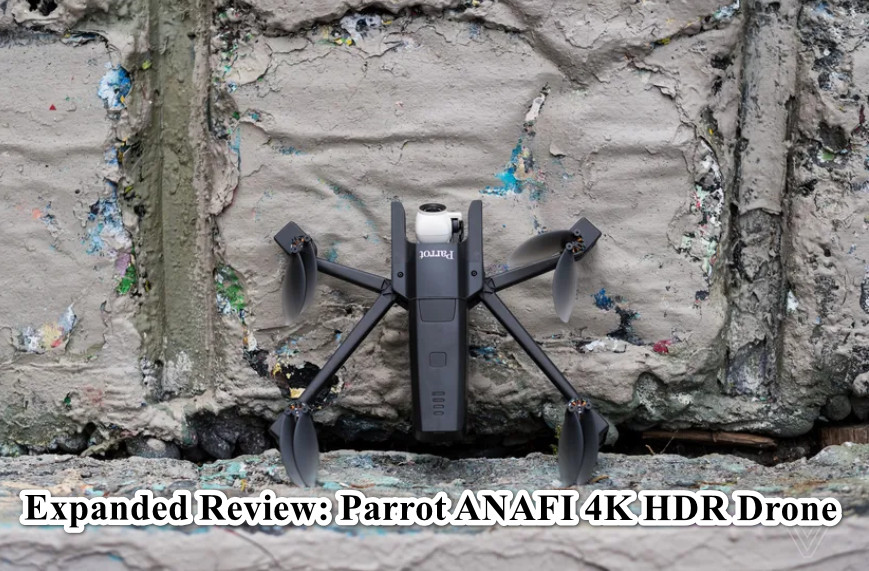The Parrot ANAFI 4K HDR drone, introduced as a direct competitor to DJI’s well-established models, aims to carve out its niche by offering a blend of portability, camera performance, and unique features. With its focus on providing high-quality imagery and innovative flight options, the parrot ANAFI drone targets both enthusiasts and semi-professionals. This expanded review delves deeper into its strengths, weaknesses, and overall user experience to help you decide if it’s the right drone for you.
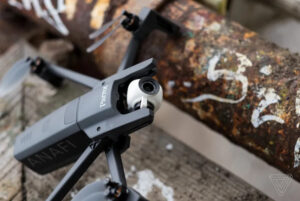
Design and Build Quality of Parrot ANAFI Drone
1. Portability:
The ANAFI’s design emphasizes portability. The drone’s arms fold inward, making it easy to transport. When folded, it fits into a compact carrying case, making it convenient for travel or casual outings. This is particularly useful for those who need to take their drone on the go, whether for vacations or day trips.
2. Durability:
The drone’s plastic construction is designed to be lightweight, but it does mean that it’s less rugged compared to drones with metal or high-grade composite builds. While this contributes to its portability, it also means that the ANAFI may be more susceptible to wear and tear over time, especially if frequently exposed to harsh conditions.
3. Aesthetics:
The ANAFI has a sleek, modern look with its streamlined design and understated color scheme. It’s visually appealing and stands out among its competitors due to its unique design elements, such as the protruding camera gimbal.
Camera and Imaging of Parrot ANAFI 4K HDR drone
1. Camera Specifications:
The ANAFI is equipped with a 21MP camera and a 4K HDR video capability. The camera features a 1/2.4-inch CMOS sensor, which supports capturing detailed images and video even in varying light conditions. The 180-degree tilt gimbal provides exceptional flexibility, allowing for high and low-angle shots that can be particularly useful for creative filming.
2. Image and Video Quality:
The 4K HDR video capture delivers high-quality footage with rich colors and enhanced dynamic range. The HDR mode is particularly effective in balancing exposure, making it ideal for shooting scenes with both bright and dark areas. While the camera performs well, it might not match the absolute quality of higher-end drones like the DJI Mavic 3, but it still offers impressive results for its class.
3. Photo Modes:
In addition to standard photo and video modes, the ANAFI includes features like Burst Mode and Time-lapse. These modes provide added flexibility for capturing dynamic scenes and creating time-lapse sequences, enhancing the drone’s versatility.
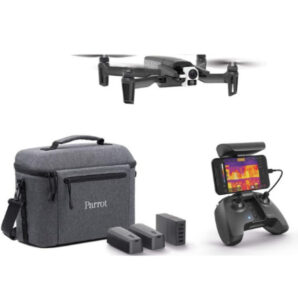
Flight Performance
1. Flight Time:
With a maximum flight time of up to 25 minutes, the ANAFI offers a competitive duration, though some high-end models like the DJI Mavic 3 provide longer flight times. The 25-minute mark is adequate for most standard flying and filming needs, though users should plan for battery management if undertaking extended sessions.
2. Flight Range:
The ANAFI boasts a range of up to 4 kilometers (2.5 miles), which is on par with many consumer drones. This range allows for capturing expansive aerial shots and provides flexibility in flight planning.
3. Flight Modes:
The ANAFI includes several flight modes such as Follow Me, Orbit, and Cinematic mode. Follow Me mode is useful for capturing dynamic footage of moving subjects, while Orbit mode allows the drone to circle around a target, providing engaging shots. The Cinematic mode smooths out movements, which is especially useful for professional-grade filming.
Stability and Control:
The ANAFI’s GPS and visual tracking systems offer reliable stability and positioning. However, it lacks some of the more advanced obstacle avoidance systems found in higher-end drones. Users need to be mindful of their surroundings and manually avoid obstacles during flight.
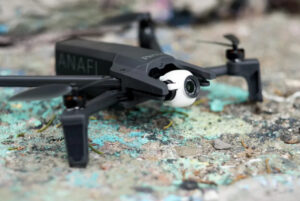
User Experience and Control
1. App and Interface:
The Free Flight 6 app provides a user-friendly interface for controlling the ANAFI. The app includes various settings and flight modes, along with live video feed and telemetry data. While intuitive, some users might find the app’s performance inconsistent, particularly in areas with strong interference.
2. Controller:
The ANAFI’s remote controller is designed to hold a smartphone, which serves as the primary display for live video and control inputs. Unlike some competitors, the controller does not come with a built-in screen, which may be a drawback for users who prefer an integrated display for clearer visuals.
3. Ease of Use:
The ANAFI is relatively easy to fly, making it suitable for both beginners and experienced pilots. The automatic flight modes simplify complex maneuvers and help users capture professional-looking footage without extensive experience.
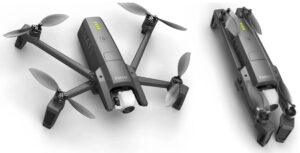
Pros and Cons of Parrot ANAFI Drone
Pros of Parrot ANAFI Drone:
- Compact and Portable: Easy to transport due to its foldable design.
- 180-Degree Tilt Camera: Allows for creative and unique shot angles.
- High-Quality Imaging: 4K HDR video and 21MP photos provide excellent image quality.
- Good Flight Time and Range: Offers a competitive flight time of 25 minutes and a range of 4 kilometers.
Cons of Parrot ANAFI Drone:
- Limited Obstacle Avoidance: Lacks advanced obstacle detection and avoidance features.
- Connectivity Issues: Some users report connectivity problems, which can affect flight stability and live video feed.
- Plastic Build: While lightweight, the plastic construction may be less durable compared to higher-end models.
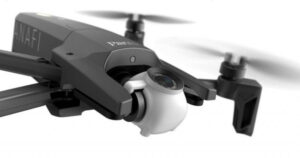
Short Summery of Parrot ANAFI Drone:
The Parrot ANAFI 4K HDR drone is a strong contender in the consumer drone market, particularly for those who value portability, innovative camera features, and good image quality. Its unique 180-degree tilt gimbal and HDR capabilities set it apart from many competitors. However, it may fall short in areas like advanced obstacle avoidance and build durability compared to higher-end models. Overall, it’s a solid choice for those looking for a versatile, high-quality drone that balances performance with portability and ease of use.
Also read: DJI M30, DJI Matrice 350 RTK

